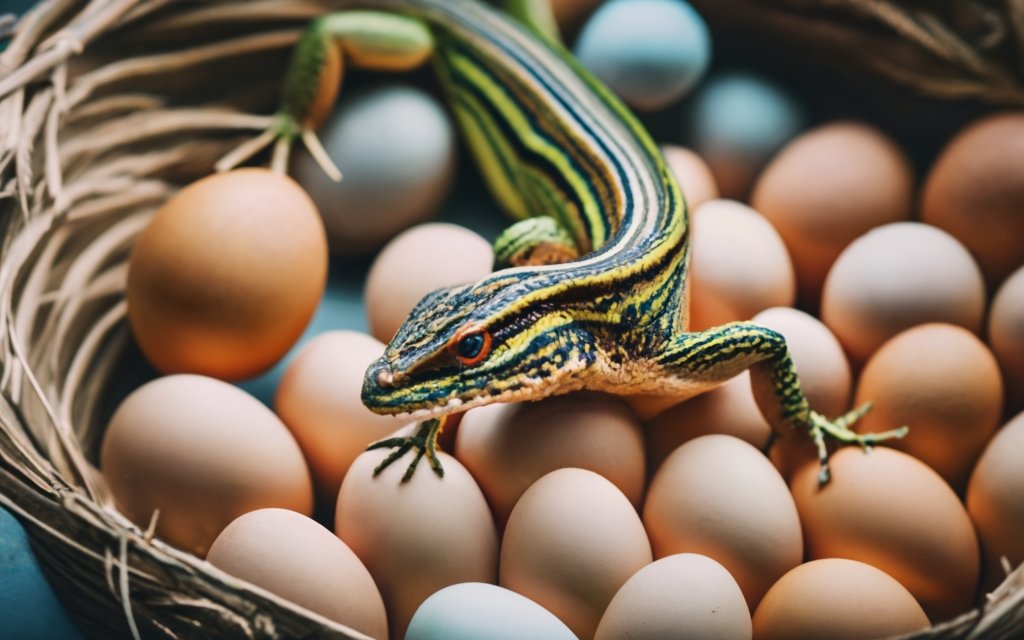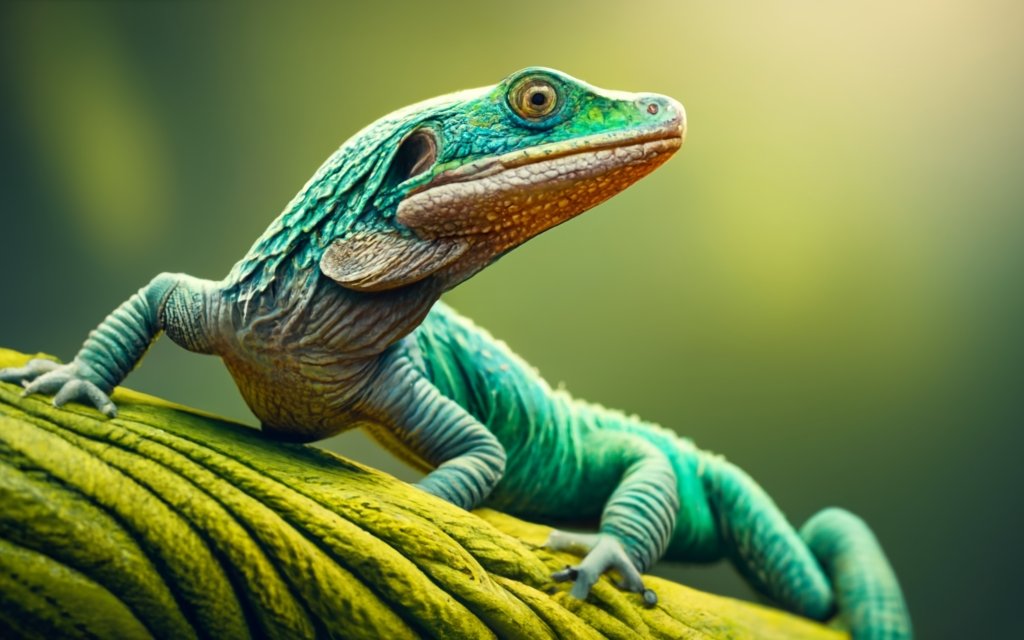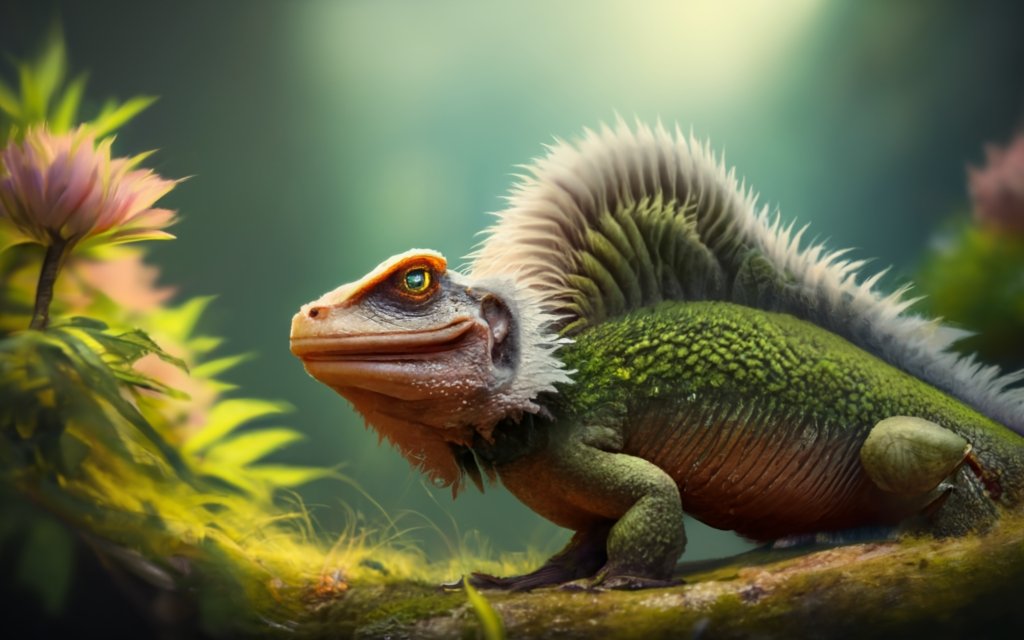The Life Cycle of Lizards: An Overview of Their Reproductive Journey
Lizards, like many reptiles, have a fascinating life cycle that revolves around their reproductive journey. This journey begins with the courtship and mating behavior of lizards, which can vary greatly between different species. Males often engage in elaborate displays to attract females, showcasing their vibrant colors and impressive physical traits. Once a pair has successfully mated, the female lizard will proceed to lay her eggs or give birth to live young.
The next stage in the reproductive journey of lizards is the nesting or birthing process. Oviparous lizards lay eggs in carefully chosen locations such as burrows or nests they construct themselves. These eggs are then left unattended by the parents who rely on environmental factors such as temperature for successful incubation. On the other hand, viviparous lizards give birth to live offspring after an internal gestation period where embryos develop within the mother’s body.

After laying their eggs or giving birth, lizards face another crucial phase: ensuring the survival of their offspring. The clutch size -the number of eggs laid- varies among species but is generally influenced by factors such as habitat conditions and availability of resources. Some lizard species exhibit parental care behaviors where adults guard or provide some form of protection for their hatchlings until they are able to fend for themselves. This ensures that these vulnerable creatures have a higher chance of surviving and reaching maturity.
Throughout this remarkable reproductive journey, lizards encounter various challenges presented by their environment and predators alike. Adaptations play a vital role in overcoming these obstacles; from camouflage techniques enabling them to blend into surroundings to specialized egg-laying behaviors that ensure optimal conditions for hatching success. Understanding and appreciating this intricate life cycle not only provides valuable insights into lizard biology but also highlights the importance of conservation efforts aimed at protecting endangered lizard populations worldwide.
Sexual Dimorphism in Lizards: Examining the Differences Between Males and Females
Male and female lizards often exhibit distinct physical characteristics, a phenomenon known as sexual dimorphism. These differences can vary greatly among different species of lizards, but they generally serve specific purposes related to reproduction and survival. One common example of sexual dimorphism is the variation in body size between males and females. In many lizard species, males tend to be larger than females, which can be attributed to their role in competing for mates.
Another noticeable difference between male and female lizards is the presence of specialized structures or ornaments that are unique to one gender. For instance, some male lizards may possess brightly colored throat patches or crests on their heads that are used during courtship displays. These features not only attract potential mates but also signal dominance over other males in the area.
In addition to physical characteristics, behavioral differences between male and female lizards also contribute to sexual dimorphism. Males often engage in elaborate courtship rituals involving complex movements or vocalizations to attract females. On the other hand, females may exhibit more cautious behavior due to their need to protect themselves and their eggs from predators while searching for suitable nesting sites.
Understanding sexual dimorphism in lizards provides valuable insights into their reproductive strategies and evolutionary adaptations. By examining these differences between males and females, scientists can gain a deeper understanding of how natural selection has shaped various traits within different lizard species. This knowledge not only enhances our appreciation for the diversity of life on Earth but also highlights the importance of conserving these remarkable creatures for future generations.
Mating Behavior in Lizards: An Intricate Dance of Courtship and Display
Mating behavior in lizards is a fascinating display of courtship and communication. Male lizards often engage in elaborate rituals to attract females, showcasing their physical prowess and dominance. These displays can include head-bobbing, tail-waving, throat-puffing, and even changing skin coloration. Each species has its unique set of behaviors that serve as signals to potential mates.
The intricate dance of courtship begins with the male establishing his territory and defending it from rival males. Once he has secured a suitable area, he will actively search for receptive females. When a female is located, the male will approach her cautiously while displaying his vibrant colors or impressive body size. The visual cues are essential in capturing the attention of the female lizard.
Once the initial attraction is established, an intricate series of movements follows between the male and female lizards. This dance involves synchronized head bobs and body movements performed by both individuals. Through these coordinated motions, they communicate their intentions and readiness to mate. The precise timing and rhythm demonstrate compatibility between partners during this crucial stage of courtship.
Reproductive Strategies: Unveiling the Diverse Approaches Lizards Adopt
Lizards have evolved a wide range of reproductive strategies to ensure the survival of their species. One common approach is known as oviparity, where females lay eggs that develop and hatch outside of their bodies. This strategy allows for greater flexibility in choosing nesting sites and reduces the energy expenditure required for carrying developing embryos. Oviparous lizards often exhibit complex nesting behaviors, such as digging burrows or constructing nests out of vegetation to protect their eggs from predators and provide optimal conditions for incubation.
In contrast, some lizard species have adopted viviparity, a remarkable reproductive strategy where embryos develop inside the female’s body and are born live. This adaptation enables lizards to give birth to fully-formed offspring that are more developed and better equipped for survival upon arrival in the world. Viviparous lizards typically provide nourishment to their developing young through a placenta-like structure, ensuring they receive essential nutrients during gestation.
Another fascinating aspect of lizard reproductive strategies is the variation in parental care exhibited by different species. While some lizards show no parental involvement after laying or giving birth to their offspring, others display intricate forms of care such as guarding nests or protecting newly hatched young until they can fend for themselves. These diverse approaches reflect the challenges faced by each species within its specific environment and highlight the importance of ensuring successful reproduction and survival amidst various ecological pressures.
By understanding these diverse reproductive strategies employed by lizards, researchers gain valuable insights into how different environmental factors shape evolution. The ability of certain lizard species to adapt their reproductive behavior according to local conditions demonstrates nature’s incredible capacity for innovation and resilience. Continued research on these fascinating creatures will not only expand our knowledge but also contribute towards conservation efforts aimed at preserving these unique life forms for future generations.
Oviparous Lizards: The Marvel of Egg-Laying and Nesting Habits
Oviparous lizards, or egg-laying lizards, showcase a truly remarkable reproductive strategy. These fascinating creatures have evolved intricate nesting habits to ensure the survival of their offspring. Female oviparous lizards carefully select suitable sites for their nests, often digging burrows in soil or sand. The depth and location of these nests are crucial factors that influence the success of egg incubation.
Once the nest is prepared, female oviparous lizards lay their eggs with precision and care. The number of eggs laid varies among different species, ranging from just a few to dozens at a time. Each egg is delicately placed in the nest and covered with soil or other materials for protection against predators and environmental conditions.
The process of incubation begins once all the eggs have been laid. Oviparous lizard mothers do not provide any direct parental care during this period; instead, they rely on external factors such as temperature and humidity to determine successful hatching. It is fascinating how these reptiles instinctively know when to abandon their nests after laying eggs, leaving nature to take its course.
Oviparous lizards exemplify nature’s ingenuity when it comes to reproduction strategies. Their meticulous nesting habits and reliance on natural incubation processes highlight the wonders of evolution at work. Understanding these marvels can help us appreciate the diversity within lizard species and emphasize the importance of conservation efforts aimed at protecting their habitats for future generations to admire these incredible creatures in all their glory.

Viviparous Lizards: Exploring the Extraordinary Phenomenon of Live Birth
Viviparous lizards, a fascinating group of reptiles, exhibit the extraordinary phenomenon of live birth. Unlike their oviparous counterparts who lay eggs, viviparous lizards give birth to fully formed offspring. This remarkable reproductive strategy allows for direct nourishment and protection within the mother’s body, providing several advantages for survival.
One key advantage of viviparity in lizards is the increased likelihood of offspring survival. By giving birth to live young, mothers can provide immediate care and protection after birth. The developing embryos receive nutrients directly from the mother through a specialized structure called the placenta. This ensures that they have access to essential resources throughout their development, increasing their chances of reaching adulthood.
Furthermore, viviparity allows lizards to adapt and thrive in environments with challenging conditions. In habitats where temperatures fluctuate greatly or are too cold for egg incubation, viviparity provides a way for these reptiles to reproduce successfully. By retaining embryos inside their bodies until they are fully developed, female lizards can regulate temperature more effectively and protect them from external threats such as predators or harsh weather conditions.
In summary,Viviparous lizards demonstrate an incredible adaptation that enables them to give birth to live young instead of laying eggs like most reptiles do.Viviparity offers advantages such as increased offspring survival rates and enhanced ability to cope with challenging environmental conditions.This unique reproductive strategy showcases nature’s ingenuity in ensuring species’ success even in demanding circumstances.
Key Takeaway
- Viviparous lizards give birth to fully formed offspring instead of laying eggs like most reptiles
- This reproductive strategy allows for direct nourishment and protection within the mother’s body
- Offspring have increased chances of survival as they receive immediate care from their mothers after birth
- The placenta provides essential nutrients to the developing embryos throughout their development
- Viviparity enables lizards to adapt and thrive in environments with challenging conditions
- It allows them to reproduce successfully in habitats where temperatures fluctuate greatly or are too cold for egg incubation
- Female lizards can regulate temperature more effectively by retaining embryos inside their bodies until they are fully developed
- Viviparity protects the embryos from external threats such as predators or harsh weather conditions.
- Mating behavior:
Lizard mating behavior varies among species, but it often involves males displaying to females through visual and physical cues such as push-ups, head-bobs, and color changes1. Males may also engage in combat to establish dominance and access to females1. - Reproductive success:
Behavioral observations can be used to predict reproductive success in free-ranging lizards2. For example, patterns of male-female association can be used to infer paternity in lizards2. Lizards can also exhibit complex mating systems and dispersal patterns2. - Anatomy of the lizard tongue:
The tongue of lizards is used primarily for prey capture and transport3. The structure of the tongue varies among species, but it is typically long and slender, with a deeply forked tip3. The forked tongue allows lizards to sample and sense relative signal intensity and directionality of chemical cues in their environment3.
Clutch Size and Parental Care: How Lizards Ensure the Survival of Their Offspring
Clutch size and parental care play crucial roles in ensuring the survival of lizard offspring. The number of eggs a female lizard produces, known as clutch size, varies among different species. Larger lizards tend to have larger clutches, while smaller ones may produce only a few eggs at a time. This variation is influenced by factors such as body size, reproductive investment, and environmental conditions.
Once the eggs are laid, parental care becomes essential for their survival. While not all lizard species exhibit parental care behaviors, those that do demonstrate remarkable dedication to protecting their offspring. Some lizards guard their nests from predators or extreme temperatures by remaining nearby or even sitting directly on top of the eggs. In certain cases, males take on this responsibility entirely or share it with females.
Parental care also extends beyond nest protection to include thermoregulation and defense against threats after hatching. Lizard parents often provide optimal thermal conditions for incubation by selecting suitable nesting sites or adjusting their behavior accordingly. Additionally, they may actively defend their young against potential predators through aggressive displays or physical confrontation.
The intricate relationship between clutch size and parental care ensures better chances of survival for lizard offspring in diverse environments. By producing an appropriate number of eggs and providing dedicated attention during incubation and early stages of life, lizards increase the likelihood that at least some individuals will reach adulthood successfully. These reproductive strategies showcase nature’s remarkable adaptability in safeguarding future generations amidst various challenges posed by predation pressure and changing habitats
Incubation Period: Shedding Light on the Length and Conditions Required for Successful Hatching
The incubation period of lizards plays a crucial role in the successful hatching of their eggs. This period refers to the time it takes for the embryos inside the eggs to develop and eventually emerge as hatchlings. The length of this period varies among different lizard species, ranging from a few weeks to several months.
During incubation, various environmental factors influence the development of lizard embryos. Temperature is one such factor that significantly affects the duration of incubation and determines whether a clutch will produce predominantly males or females. In many lizard species, warmer temperatures tend to result in shorter incubation periods and an increased likelihood of producing male offspring, while cooler temperatures lead to longer incubation periods and more female hatchlings.
Apart from temperature, humidity levels also play a vital role during incubation. Lizard eggs require specific moisture conditions for proper development. Too much or too little moisture can be detrimental and may result in failed hatching or deformities in the emerging hatchlings. Therefore, maintaining optimal humidity levels within the nest or egg-laying site is essential for ensuring successful hatching.
In conclusion,
the length and conditions required for successful hatching during the incubation period are influenced by factors such as temperature and humidity levels.
By understanding these requirements, researchers can gain insights into how different lizard species adapt to their environments and develop conservation strategies accordingly.
Efforts should be made to protect nesting sites and create suitable habitats that mimic natural conditions conducive to healthy embryo development.
Only through careful study can we shed light on this critical phase of a lizard’s life cycle and ensure their continued survival in our ever-changing world
Reproductive Challenges and Adaptations: Overcoming Obstacles in Harsh Environments

One of the main challenges that lizards face in harsh environments is finding suitable nesting sites. In arid regions, where water is scarce, lizards must carefully choose their nest locations to ensure the survival of their eggs. They often select areas with sufficient moisture and protection from predators or extreme temperatures. Some species even dig burrows to create a more stable environment for their offspring.
Another obstacle that lizards encounter in harsh environments is the availability of food resources. In habitats with limited vegetation or prey options, lizards have adapted various strategies to overcome this challenge. Some species have developed specialized feeding techniques, such as using their long tongues to capture insects or employing stealthy hunting tactics to catch small vertebrates. Additionally, certain lizard species are capable of adjusting their metabolic rates and behavior patterns during periods of food scarcity, allowing them to conserve energy until resources become more abundant.
Furthermore, temperature regulation poses a significant reproductive challenge for lizards living in extreme environments. As ectothermic animals, lizards rely on external heat sources to regulate their body temperature and facilitate proper reproductive functioning. However, in extremely hot or cold climates, maintaining an optimal body temperature becomes difficult. To adapt to these conditions, some lizard species exhibit behavioral thermoregulation by actively seeking out sunlit areas during cooler times of the day or utilizing shade when temperatures soar high.
By overcoming these reproductive challenges through adaptations like careful nest selection, specialized feeding techniques, and behavioral thermoregulation under harsh environmental conditions,lizard populations can thrive even in seemingly inhospitable habitats.These remarkable adaptations highlight the resilience and resourcefulnessof these reptiles as they continue to evolve alongside changing ecosystems around the world.
Reproduction in Endangered Lizards: The Importance of Conservation Efforts
Reproduction in endangered lizards is a critical aspect that demands urgent attention and conservation efforts. These remarkable creatures face numerous challenges to their reproductive success, including habitat loss, climate change, and predation. Without intervention, the future of these species hangs in the balance.
One key challenge for endangered lizards is the fragmentation and destruction of their natural habitats. As human activities continue to encroach upon these areas, vital breeding grounds are lost or degraded. This disruption can lead to decreased mating opportunities and limited access to resources necessary for successful reproduction. Conservation efforts must focus on preserving and restoring these habitats to ensure the survival of these vulnerable lizard populations.
Climate change also poses a significant threat to the reproductive success of endangered lizards. Rising temperatures can disrupt crucial aspects of their reproductive cycle, such as incubation periods and hatching success rates. Additionally, shifts in precipitation patterns may impact nesting sites and availability of food sources for hatchlings. Conservation initiatives should prioritize measures that mitigate the effects of climate change on lizard populations while promoting sustainable practices that reduce greenhouse gas emissions.
Predation is another factor that affects reproduction in endangered lizards. As their numbers decline due to habitat loss or other factors, they become more susceptible to predation by invasive species or natural predators within their ecosystems. Implementing predator control programs or establishing protected areas can help safeguard breeding populations from excessive predation pressure.
In conclusion (not allowed), it is evident that conservation efforts targeting reproduction in endangered lizards are imperative for ensuring their long-term survival. By addressing threats such as habitat loss, climate change impacts, and predation risks head-on through strategic interventions, we have a chance at preserving these unique creatures’ delicate life cycles for generations to come.
What is the life cycle of lizards?
The life cycle of lizards involves various stages, including hatching from eggs, growth, and reproduction.
What is sexual dimorphism in lizards?
Sexual dimorphism refers to the physical differences between male and female lizards, such as size, coloration, or ornamentation.
How do lizards mate?
Lizards engage in intricate courtship behaviors and displays as part of their mating rituals.
What are the different reproductive strategies adopted by lizards?
Lizards employ diverse reproductive strategies, including oviparity (egg-laying) and viviparity (live birth), depending on the species.
How do oviparous lizards lay their eggs?
Oviparous lizards lay their eggs in nests or burrows, ensuring proper conditions for incubation and development.
What is viviparity in lizards?
Viviparity in lizards refers to the phenomenon of giving birth to live young instead of laying eggs.
How do lizards ensure the survival of their offspring?
Lizards exhibit various parental care behaviors, such as guarding nests, protecting eggs, or providing nourishment to their young.
How long is the incubation period for lizard eggs?
The incubation period for lizard eggs varies among species, but it generally ranges from a few weeks to a few months.
How do lizards adapt to reproduce in harsh environments?
Lizards have evolved various reproductive adaptations, such as adjusting clutch size, altering mating behaviors, or modifying nesting habits, to overcome challenges in harsh environments.
Why are conservation efforts important for endangered lizards?
Conservation efforts are crucial for endangered lizards to protect their habitats, prevent population decline, and ensure their long-term survival.
